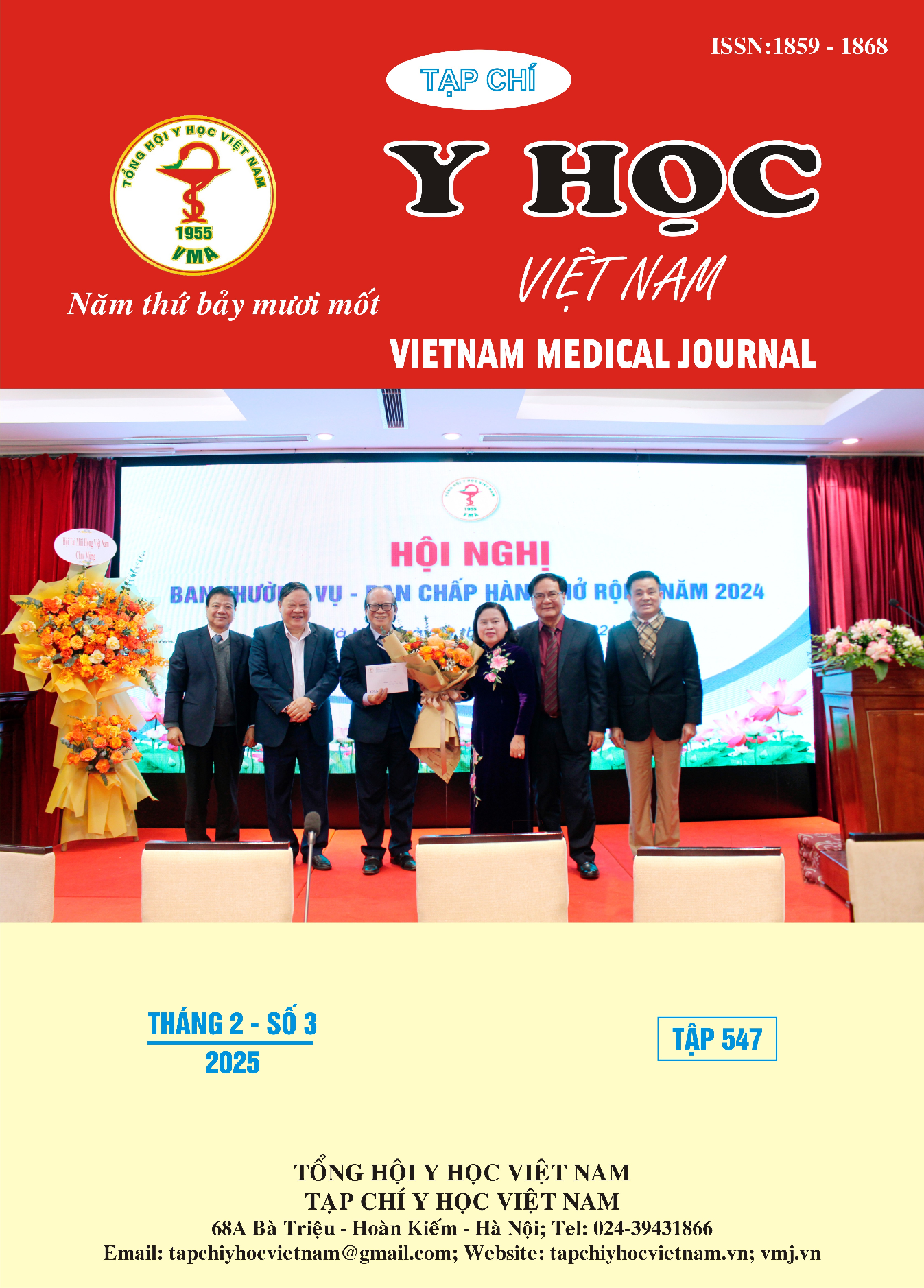THE OUTCOME OF PANCREATICODUODENECTOMY FOR SOLID PSEUDOPAPILLARY TUMOR AT THE PANCERATIC HEAD IN VIETDUC UNIVERSITY HOSPITAL
Main Article Content
Abstract
Objective: To evaluate the early and long-term outcomes of patients after pancreaticoduodenectomy for pseudopapillary solid tumors in the pancreatic head. Methods: A retrospective study of all patients with pancreaticoduodenectomy for pseudopapillary solid tumors at the pancreatic head in Viet Duc Hospital from January 2014 to October 2020. Results: There were 34 patients with pancreaticoduodenectomy for pseudopapillary solid tumors at the pancreatic head in the study, with an average age of 30.9 ± 13.7 years, of which 88.2% were female. Epigastric pain accounted for the highest rate of 70.5%, and asymptomatic patients with incidental disease diagnosis accounted for 29.4%. Computed tomography showed that the tumor had clear boundaries in 90.9%, had a tumor capsule in 75.7%, had tissue and fluid structures in 78.8%, had heterogenous and increasing contrast enhancement in the venous phase in 78.8%, had a dilated common bile duct in 3%, and a dilated Wirsung duct in 6.1%. All patients underwent open surgery to perform the pancreaticoduodenectomy, of which 58.8% had a pancreaticoenteric anastomosis, and 41.2% had a pancreaticogastric anastomosis. The average surgical time was 307 ± 68 minutes, and 64.7% did not require blood transfusion. The average hospital stay was 12.4 ± 3.2 days. The postoperative mortality rate was 0%, postoperative bleeding 2.9%, and 2.9% for pancreatic fistula. The 5-year, 10-year survival rate after surgery was 96.4%, and the 5-year, 10-year recurrence-free rate was 92.8%. 82.1% of patients had good quality of life after surgery. Conclusion: Pancreatoduodenectomy for solid pseudopapillary tumor at pancreatic head was performed safely with low complication rates. Overall survival and disease-free survival rates after 5 and 10 years are high and postoperative quality of life is good.
Article Details
References
2. Nagtegaal ID, Odze RD, Klimstra D, et al. The 2019 WHO classification of tumours of the digestive system. 2020;76(2):182.
3. Fayers PJEOfR, Cancer To. The EORTC QLQ-C30 scoring manual. 2001;
4. Wang P, Wei J, Wu J, et al. Diagnosis and treatment of solid-pseudopapillary tumors of the pancreas: A single institution experience with 97 cases. 2018;18(4):415-419.
5. Antoniou EA, Damaskos C, Garmpis N, et al. Solid pseudopapillary tumor of the pancreas: a single-center experience and review of the literature. 2017;31(4):501-510.
6. Guo T, Wang L, Xie P, Zhang Z, Yu YJCm, research. Diagnosis and surgical treatment and pathological findings of solid pseudopapillary tumor of the pancreas: a single-institution experience. 2020:581-588.
7. Yu P-F, Hu Z-H, Wang X-B, et al. Solid pseudopapillary tumor of the pancreas: a review of 553 cases in Chinese literature. 2010;16(10):1209.
8. Reddy S, Cameron JL, Scudiere J, et al. Surgical management of solid-pseudopapillary neoplasms of the pancreas (Franz or Hamoudi tumors): a large single-institutional series. 2009;208(5):950-957.
9. Okano K, Hirao T, Unno M, et al. Postoperative infectious complications after pancreatic resection. 2015;102(12):1551-1560.


